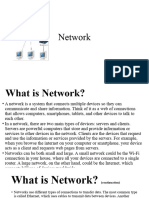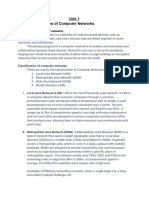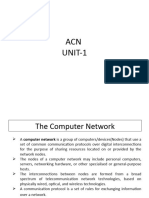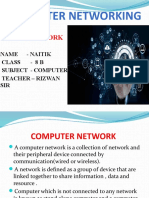0% found this document useful (0 votes)
12 views3 pagesNetworking Basics
A network is a collection of interconnected devices that facilitate communication and resource sharing. Common types of networks include LAN, WAN, MAN, and PAN, each serving different geographic areas. Networks can be structured as server-based, client/server, or peer-to-peer, and utilize various topologies, media, hardware, and protocols for communication.
Uploaded by
muhammadkamran3980Copyright
© © All Rights Reserved
We take content rights seriously. If you suspect this is your content, claim it here.
Available Formats
Download as PDF, TXT or read online on Scribd
0% found this document useful (0 votes)
12 views3 pagesNetworking Basics
A network is a collection of interconnected devices that facilitate communication and resource sharing. Common types of networks include LAN, WAN, MAN, and PAN, each serving different geographic areas. Networks can be structured as server-based, client/server, or peer-to-peer, and utilize various topologies, media, hardware, and protocols for communication.
Uploaded by
muhammadkamran3980Copyright
© © All Rights Reserved
We take content rights seriously. If you suspect this is your content, claim it here.
Available Formats
Download as PDF, TXT or read online on Scribd
/ 3































































